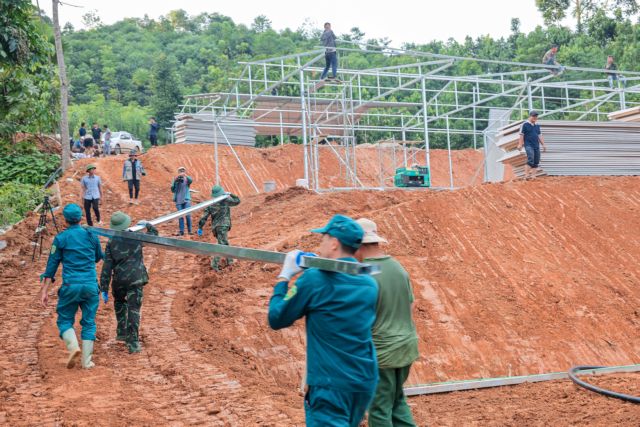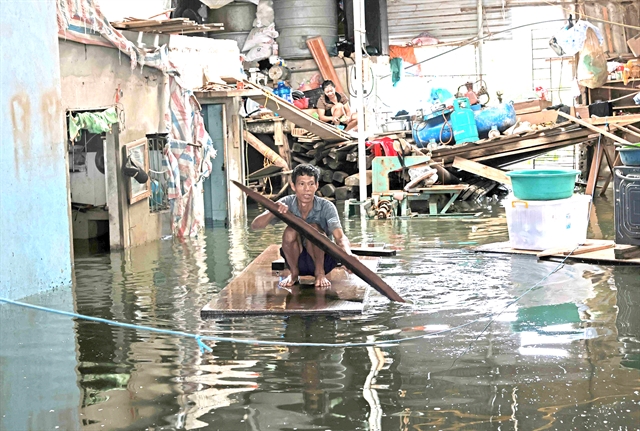 Opinion
Opinion


|
| Professor, Dr Đào Xuân Học, former Deputy Minister of Agriculture and Rural Development. — Photo vietnamnet.vn |
Professor, Dr Đào Xuân Học, former Deputy Minister of Agriculture and Rural Development spoke to Vietnamnet online newspaper about storm and flood response, as well as measures to enhance the resilience of disaster-prone areas in the future.
Typhoon Yagi has caused tremendous casualties and property damage in the north, especially in Quảng Ninh Province and various mountainous localities. What are the priorities for alleviating the storm’s aftermath?
Addressing the consequences of the typhoon is an urgent issue, and a priority of the Party, state and local authorities. The most pressing concern right now is to arrange resettlement for those who lost their homes in the disaster.
The following priorities include restoring infrastructure, production and businesses in the affected areas. In addition, after storms and floods, we must pay special attention to disease prevention, as decomposing crops and livestock can lead to various illnesses for humans.
Reconstruction in affected areas following Typhoon Yagi, such as in Lào Cai Province’s Nủ Village or Quảng Ninh Province, is being carried out with urgency by central and local departments. Prime Minister Phạm Minh Chính trudged through the mud to Nủ Village to see with his own eyes the devastating destruction, sorrow and losses that local people have suffered.
The Prime Minister also tasked Lào Cai Province with arranging new residences for Nủ Village people. At the latest, by the end of December 2024, Nủ villagers must have stable housing and living conditions in a safe and healthy environment.
As for Quảng Ninh Province, immediately after Typhoon Yagi, the local authorities implemented various important policies to care for vulnerable groups as well as people who lost their homes and boats in the storm, in addition to infrastructure restoration.
For business and production recovery, Quảng Ninh’s leadership has also proposed that banks reduce interest rates to alleviate the burden on local businesses.

|
| Temporary resettlements are built for Nủ villagers who survived the tragic flood that killed 60 of its population of 760. — VNA/VNS Photo Hoàng Hiếu |
What are the focuses on reducing and adapting to disaster risks based on the damage caused by Typhoon Yagi and the increasingly volatile weather conditions?
These are long-term and fundamental issues in minimising damage caused by storms and floods. The first thing is to raise public awareness about disaster response, and this is about community-based disaster management. It is crucial that each village, neighbourhood and hamlet understand what types of natural disasters occur in their area and their hidden dangers.
For example, coastal areas often experience whirlwinds during storms, therefore, houses need to be reinforced and people should refrain from going outside during this time. Meanwhile, storms cause flash floods and mudslides in mountainous areas, fallen trees in urban areas, and waterlogging in lowlands.
By understanding the characteristics of each type of disaster, people in each area will know how to respond, such as stockpiling food sufficient for a few days ahead of a storm. For areas at risk of flash floods, villagers should assign people to keep watch during rainy days. Early detection, even by a few dozen minutes, can be enough for evacuation.
Ma Seo Chứ, the head of Kho Vàng Village (in Bắc Hà District, Lào Cai Province), upon discovering a 20cm-wide rift on the nearby hill convinced 115 villagers to evacuate to safety. This story is a prime example of placing the community at the core of storm response and management. It is also a lesson for policymakers to study and draw experiences from in storm and flood prevention and control.
In addition, schools must educate students on how to detect weather abnormalities. When people understand the harshness of climate, they can be prepared to respond to disaster.
The flash flood that swept away Nủ Village (Lào Cai Province) left devastating consequences, with 57 people dead and 10 others remaining missing. What are the sustainable measures to minimise storm-induced damage in the mountainous areas?
Such flash floods occur when rivers and streams are obstructed, coupled with dense primary forests and underground lakes in the mountains. Prolonged downpours lead to unstable soil structure, which then easily collapses and causes flash floods and mudslides. I have participated in various flood relief efforts and witnessed numerous heartbreaking situations when lives were scattered in the mud - it was truly horrifying.
In fact, for the past 20 years, we have put in place programmes to relocate people in landslide-prone areas to safer locations. However, some villages have existed there for 300-400 years, which makes relocation difficult. People in mountainous areas tend to reside near water sources, and these are locations at high risk of flash floods during storms.
Therefore, the optimal approach, as I said, is to raise people’s awareness and enhance their vigilance during the rainy season. They must also build sturdier homes to ensure safety during these months.
In regard to state governance, we must strengthen our infrastructure to ensure safety for the people. In fact, we have already built flood and storm-resistant houses in the coastal areas.
Additionally, regarding relocation, we must work to adapt people’s livelihoods to each area’s weather conditions. Only by doing so can we reduce economic losses when natural disasters occur.

|
| A neighbourhood in Hà Nội's suburban Mỹ Đức District remains flooded due to the effected of Typhoon Yagi in this photo dated September 28, 2024. — VNA/VNS Photo Trần Việt |
In the aftermath of Typhoon Yagi, many areas in Hà Nội and the Red River Delta were submerged, forcing numerous households to evacuate and causing significant property damage. Should we change the ‘river-oriented’ development approach?
There are many perspectives on this issue. The old saying “nhất thủy nhì hỏa” (water is the most dangerous, followed by fire) has warned of the unpredictability of natural disasters. In my opinion, people living in the way of flood drainage must be relocated to ensure safety. Outside of these routes, constructions are allowed, but with appropriate designs.
It should be noted that many other countries, such as the Netherlands, consider excessive rainfall and flooding to be normal occurrences. Therefore, they constructed ultra-durable dikes. People are allowed to build homes in flood drainage areas, but they must not obstruct the water flow. In fact, the Yangtze River (China) is much more ferocious than the Red River, but people are allowed to live along the dike, and a major city like Wuhan has even developed.
Utilising the Red River’s alluvial land and "bãi giữa" (middle island) is necessary, but careful calculations must be made to ensure safety during rainy and flood season. — VNS




